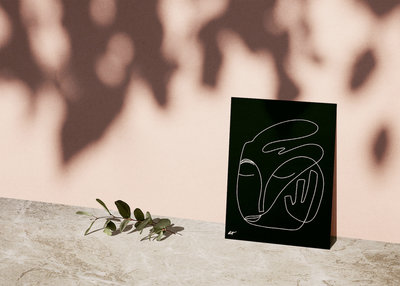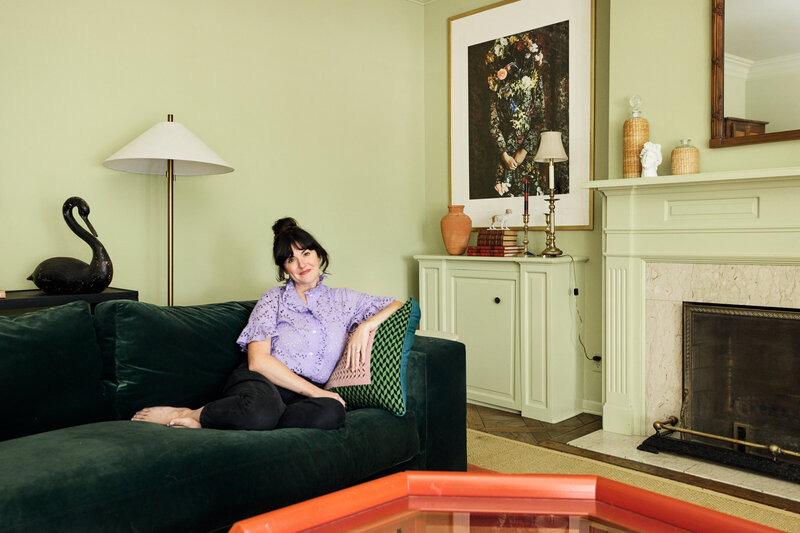

Hi. My name is Monique. I’m 5’3” with black hair and hazel eyes. I’m a bit of a sensitive soul and stubborn as a mule. I have three chickens, two dogs, and a loving, wonderful husband. Together we share finances and own a home. I struggle with body dysmorphia and am a survivor of sexual assault. I like feeling good about looking strong and I have a solid (and ever-growing) shoe collection. I double majored in English and Women’s and Gender Studies in college… and I’m also a Feminist. But does all of this—my marriage, homeownership, and personal facts—make me any less of a Feminist?
Nope. No, it does not.
According to Merriam-Webster, the definition of Feminism is as follows: “The theory of the political, economic, and social equality of the sexes” or “Organized activity on the behalf of women’s rights and interests”
So let’s backtrack for a minute. Imagine a time where civil rights, much less women’s rights, were non-existent. There was no personal or political realm as it pertained to women and people of color. There were simply possessive marital relationships and the enslavement of human beings: men of privilege had all the power.
During this period, the Abolitionist movement garnered strength and eventually the climate would reach a tipping point. By the early 1800s, many northern states had outlawed slavery, aiding the movement’s tenacity and objective. Sadly, such a measure would not absolve the states of inequity as the Civil War would be soon to follow.
Meanwhile, women were still the property of their husbands and thus lacking any kind of say or influence—regardless of their race, social status, or political involvement. Prominent female voices within the Abolitionist movement, like the Grimké sisters and Lucretia Mott, recognized the inextricable link between their efforts as anti-slavery activists and their own lack of power as women. By the 1840s, the women’s equality conversation pivoted to larger platforms, gaining speed and a title—the Women’s Rights Movement. Much of the movement’s early emphasis centered around women’s suffrage and in 1920, Congress passed the Nineteenth Amendment, which finally gave women the right to vote. It took just shy of 100 years for women to get the right to vote. And nearly 100 years-and-many-changes-later, we’re still fighting for equality in some way, shape, or form.
This lengthy backstory is to say that the Abolitionist movement laid the foundation for the Women’s Rights Movement, which in turn set the stage for the Feminism we know today. A movement’s history, or in this case Herstory, reminds us about the growth, progression, conflict, resolution, and re-emergence of systemic issues. Because Feminism has not always been called Feminism. It has gone by many names or no name at all, is sometimes (though usually) dependent on the political initiative or climate at hand. But the end goal remains the same: equal rights for all women.
Somewhere along the way, the word Feminist took on a multiplicity of meanings largely rooted in misconceptions, assumptions, or stereotypes. These apply both internally (within the movement) and outside of it, too. Meaning, that in order to be a Feminist you must epitomize a description or role assignment. Or, when someone hears that you are a Feminist, they immediately make assumptions about you. But why—why are there stipulations or qualifications? Because, can’t anyone be a Feminist if they believe in equality for women and thus advocate for equal rights?
Admittedly, that’s a rhetorical question because two things: 1. yes, anyone can be a Feminist if they believe in equal rights between the sexes and 2. I know definitively that these kinds of conditionals and stereotypes are isolating for those within and outside a movement. And not just isolating between two people—they can tear a movement apart. While studying Women’s and Gender Studies in college, I watched misbeliefs and alienations unfold in classrooms and safe spaces alike—ones that even mimicked the very Herstory we were learning about. It created hostile riffs between individuals and groups of people. In some cases, you even had Feminist-pitted-against-Feminist: that in order to be a “worthy” Feminist, you had to fulfill a series of requirements.
Even within various campus Feminists groups, I observed and participated in bickering centered around what made someone a true Feminist. I found it difficult to make progressive strides towards equality when we couldn’t even establish equal footing amongst ourselves. And the most maddening part? I was watching Herstory repeat itself: it wasn’t the first time that the Women’s Rights Movement was divided.
In 1869, the early Women’s Rights Movement was divided into two sections: one lead by Lucy Stone and the other pioneered by Susan B. Anthony and Elizabeth Cady Stanton. Eventually, the two would become unified in their efforts, but it certainly wasn’t overnight. Or, take Susan Brownmiller’s In Our Time: A Memoir of a Revolution as an example. Brownmiller offers a first-hand editorial perspective and walks you through the second wave of Feminism—from Betty Friedan with the National Organization of Women to the juxtaposing Shulamith Firestone with the New York Radical Women. Between the pages, you’ll find a riveting, honest, and even humorous account of the experiences, backlash, and schisms within the movement. It’s a pretty great read on the whole, so I highly recommend it. The first time I read this book was early on in my collegiate studies—I was young and filled with a fury, ready to take on The Man. But despite the book’s monumental impact, I totally failed to take note of how important it was to keep stereotypes in perspective.
Full disclosure: for a long time I subscribed to the notion that in order to be a legitimate Feminist, one had to emulate a certain set of beliefs. So I held myself to some wild expectations. Such as: 1. A “real” Feminist does not indulge in capitalist tendencies (e.g. shoe shopping) 2. A “real” Feminist does not get married (at all) 3. A “real” Feminist does not subscribe to popular culture (e.g. one does not listen to Taylor Swift) 4. A “real” Feminist does not use feminine products like tampons 5. A “real” Feminist remains angry and resentful of the fact that they are oppressed… and the list goes on. But that list for me would change. A lot. Because, what happens when you age, grow, and adapt? You change (most of the time). I distinctly remember the day that I realized I had grown out of my old standards—I believe the words I asked myself were “Am I still a Feminist if I don’t use my Diva Cup? Am I still a Feminist even though I got married to a cisgender male? And… when did I stop being so angry and self-righteous?”
Because I can be whoever I am and still be an advocate for equal rights at the same time. I didn’t need to prove myself to anyone: I was and still am a Feminist no matter what. In truth, I believe that Feminism ought to remain multi-faceted and dual-natured no matter what subset, category, or personal point of view my (or your) Feminism falls under. As Feminists, we (in the shadow and somewhat limited perspective of the movement’s founders) need to continue to adapt, grow, and react to the new sets of obstacles, systemic challenges, and privileges that we encounter. In other words, rather than let tropes or stereotypes dictate and divide us, we can embrace our differences and continue working toward the greater good of the movement. Otherwise, we run the risk of growing stagnant and get in the way of our own end goal, which is to achieve equality.
So…..at the end of the day, this is what a Feminist looks like. It looks like me, you, and my cisgender partner, too.
Image via
BY Monique Seitz-Davis - November 8, 2018
Most-read posts:
Did you know W&D now has a resource library of Printable Art, Templates, Freebies, and more?
take me there
Get Our Best W&D Resources
for designing a life well-lived




Thank you for being here. For being open to enjoying life’s simple pleasures and looking inward to understand yourself, your neighbors, and your fellow humans! I’m looking forward to chatting with you.
Hi, I'm Kate. Welcome to my happy place.
















Loved this post. It’s so true, sometimes we are under so many labels that is just useless. To me personally, being a feminist means to spread love and sisterhood, to share my experiences so that other women can relate and feel a little support. And most importantly, to make ourselves respected and respectful without hurting anyone else. Love xx
Thank you for this thoughtful reflection on what it means to be female and a feminist — that these labels should not be limits.
It was so good reading this! Thank you so much for sharing this piece of story and wisdom with us!
Nova Launcher Prime replaces your home screen with a more cooler one which can be altered at any point without any issue. Change symbols, designs, movements and that’s just the beginning. Nova Launcher Prime apk is the first and most cleaned adaptable launcher for your gadget.